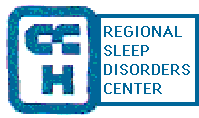OTHER
MEDICAL CONDITIONS ASSOCIATED WITH SLEEP APNEA
There
are many. They include:
-CONDITIONS
THAT COMPROMISE AIRWAY PATENCY AND ADEQUACY OF BREATHING: such
as a deviated nasal septum, allergic rhinitis, adenotonsillar hypertrophy,
disproportionate upper airway anatomy (ex: elongated soft palate,
large tongue, mandibular deficiency/class II occlusion), masses
of the upper airway, kyphoscoliosis, abdominal obesity, diaphragmatic/palatal/vocal
cord paralysis, various neuromuscular disorders including different
types of muscular dystrophy, myotonic dystrophy and post-polio
syndrome, various syndromes of dwarfism, Down syndrome, Prader
Willi syndrome, Shy Drager syndrome.
-VARIOUS
ENDOCRINE DISORDERS: including hypothyroidism, acromegaly and Cushing's
syndrome.
-CONDITIONS
THAT DECREASE CARDIAC OUTPUT: such as atrial fibrillation, cardiomyopathies
and congestive heart failure--at least in part due to the deleterious
impact of delayed circulation time on the neural control of breathing.
Also, patients with Cheyne Stokes breathing frequently experience
collapse of the upper airway in sleep, during their crescendo increases
in ventilatory effort. It has been established that the treatment
responsiveness of chronic congestive heart failure is often dramatically
improved by treatment of the patient's concurrent sleep apnea syndrome.
-PULMONARY
DISEASE: often associated with sleep apnea as an aggravating factor,
since the magnitude of sleep-related desaturations will be worsened
by low baseline oxgen saturations in wakefulness. Chronic obstructive
pulmonary disease has been associated with apneas in REM sleep.
Oxygen administration will sometimes increase the duration of apneas
occurring in that specific sleep stage.
-IN
MANY PATIENTS, THOUGH: A PHYSICAL EXAMINATION IN WAKEFULNESS WILL
PROVE ENTIRELY NORMAL--OR AT MOST, REFLECTIVE OF THE CONSEQUENCES
OF THE BREATHING FAILURE THAT STILL REMAINS HIDDEN IN THE NIGHT.
Healthy in wakefulness; critically ill during sleep.
When
severe, sleep apnea can kill patients.
To
make matters worse, in the absence of potentially lethal cardiac
dysrhythmias, it appears likely to do so slowly--at high cost,
with progressive disability, with immense human suffering, and
frequently, with concurrent risk to the health and safety of others
as well.
Even
in the busiest of practices, it is possible to detect sleep apnea
and avert disaster in a large percentage of cases.
How
can physicians
ensure detection and effective care of sleep apnea?
|

